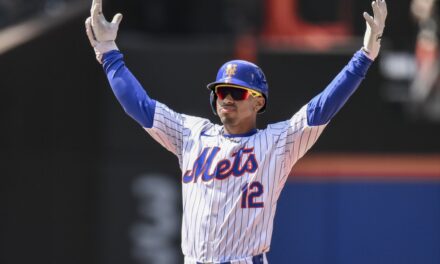The business of baseball is a lot tougher to grasp than the dynamics of “on-the-field” play. As fans, we look at the end result of every decision made. Did he sign? Who did we trade? When was he drafted?
Rarely do we get to see what happens behind closed doors.
Recently, the injury of Alex Rodriguez has brought about questions regarding the insurance of a player’s contract. On top of that, the discussion of whether the Yankees can void the deal they voluntarily signed has come into question as well.
Regarding the insurance on a contract, here are some things you need to know:
Most of the insurance policies are covered within 3 year intervals, and most policies are done solely to protect teams from injuries to players on a long term deal. So for example, David Wright’s new 8 year deal would likely get a new policy after 2016, because he was already signed in 2013.
If you’re wondering why this is the case, think like an insurer for a minute.
Would you rather insure a contract for a 30 year old until he’s 38, or would you rather have a new policy at 34 be written? It’s not in the insurer’s best interest to protect the team for the full 8 years at age 30. The likelihood of an injury to Wright at age 35 is greater than the chance at 31. Therefore, the insurer will not offer as much protection in 2017 as they did in 2014.
Most policies cover between 50-80% of the total contract value with premiums as high as 10% of the contract’s annual value. No insurer will cover the entire value of the contract, so there will always be some sort of risk on the teams part.
A major league team can only collect on a policy if a player is on the DL. Prior to the 1999 season, the Baltimore Orioles signed Albert Belle to a 5 year offer worth just over $60 million. Following the 2000 season, Belle was forced to retire due to a degenerative hip disease at age 34.
Because he could not fulfill the remaining 3 years on his contract, three things happened.
The first, he had to remain on their 40 man roster per the agreement within his insurance policy. Belle would still receive every penny of his remaining $39 million, but the Orioles were able to recover $23 million of that contract through the insurance policy.
This moment was when teams and insurer’s focused a little more closely on what and who to insure.
Cardinals former GM Walt Jocketty said
“It’s become so expensive that it’s a cost item we really have to look at when you put your payroll together. If you’re going to insure players, you almost have to include that as part of your payroll.”
The reason for this is likely that there is so much red tape involved in recovering a lucrative policy, that you may not see the recovery in the time it takes to pay said player. The Orioles had to pay Belle, regardless of what happened with the insurance. A baseball player’s contract is guaranteed.

Policies often did, but now definitely do not include coverage on a pre-existing injury. So for example, it’s very unlikely that the Mets would be covered on David Wright’s back should he injure it again or possibly suffer from post-concussion symptoms.
To take it one step back into the past, is it possible the Mets could not get an insurance policy on Jose Reyes’ hamstring/leg problems? It most certainly is.
For pitchers, the policy is generally more expensive and at times may not cover an injury to the elbow or throwing shoulder even if there is not a history of such injury.
In 2009, the Diamondbacks were looking to extend Brandon Webb for 3 years, worth over $50 million. Even though he passed a team physical, the Diamondbacks were informed their insurer would not cover Webb’s right arm. The Diamondbacks pulled their offer at that point. To a fan, they see not bringing Webb back for 3 years as a crime against the team – to the general manager and owner, they saw it as a poor business decision.
Insurance is also important when you consider the possibility of trading aging players on a long term deal.
In 2002, Omar Minaya then GM of Montreal said
“The Tom Glavine negotiations could be a case in point. When you’re negotiating a contract, the insurance issue comes up more and more, especially now that it’s three years. When you take on a guy in a trade, you always ask what’s the insurance situation.”
The other thing to remember is that players are not involved in this process. They do not care if you insure their contract or not. They are getting their money no matter what, how a team protects themselves is entirely up to them.
Let’s bring this full circle to the Yankees situation due to its relevancy.
It’s very possible and likely that their insurance policy on Alex Rodriguez’ remaining $114 million is not a cut and dry policy. That contract began in 2008, which means a new policy began in either 2010 or 2011 at the latest. Think like an insurer again.
You had a declining 34-35 year old, who has since been outed as a steroid user in his past. There’s no way they are insuring that contract on the high end of its remaining value. You’ll continue to read people assume that if Rodriguez is shelved for the rest of his career that the Yankees would recover the entire dollar amount. That’s not true.
You’ll also be reading about the Yankees trying to void his contract. That’s a wing and a prayer. It’s very unlikely that Rodriguez’s agent (Boras) allowed anything regarding steroids to be written in his contract. The Yankees will have to go above and beyond to find ways to void the deal, and at the end of the day – Arod is getting his money no matter what.
The Yankees only hope in my view of getting any money back on Rodriguez’s contract is if he doesn’t play in 2013 and then beyond that. If he heals in 2014 and they keep him on the DL in an attempt to recover more money, the insurer will have their own physical done on Rodriguez and determine the extent of the injury based on possible coverage.
But one thing to consider, an insurer is generally more careful than a team when it comes to their long-term financial commitments. Does Rodriguez’s policy include the fact that he cannot take any illegal substances that may lead to a potential injury? That’s very possible. There’s a lot to be determined, but I think we need to be careful in assuming this financial issue is cut and dry for the Yankees. It involves so much more than your mainstream media wishes to discuss.
If you’ve ever been curious enough to dive deep into the business of baseball (and other sports), I recommend two things to you. The first is to take a look at Sports Business Journal.
The second is to take a look at the complexity of a major league contract. This contract is referred to as a “split contract,” and though the name is blackened out, it is likely a veteran on the 40 man roster’s contract.
It’s items like this that help separate fans and executives. We see things as black and white. Sign this guy, trade for this guy and be done. But it’s never that easy, especially when you’re dealing with long term commitments.















